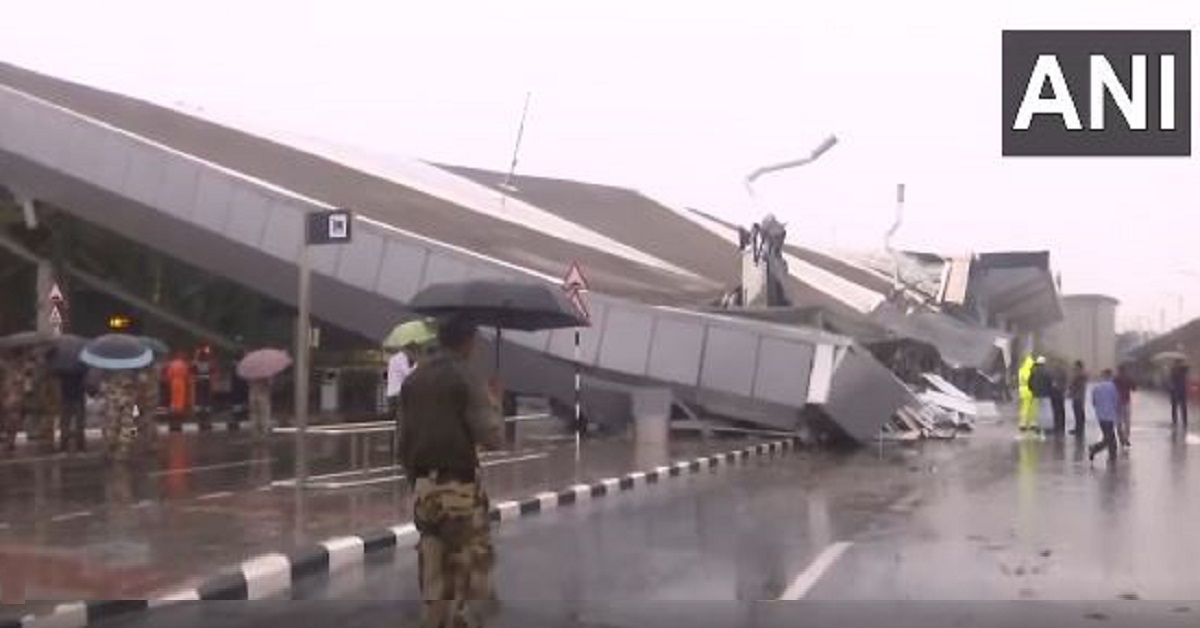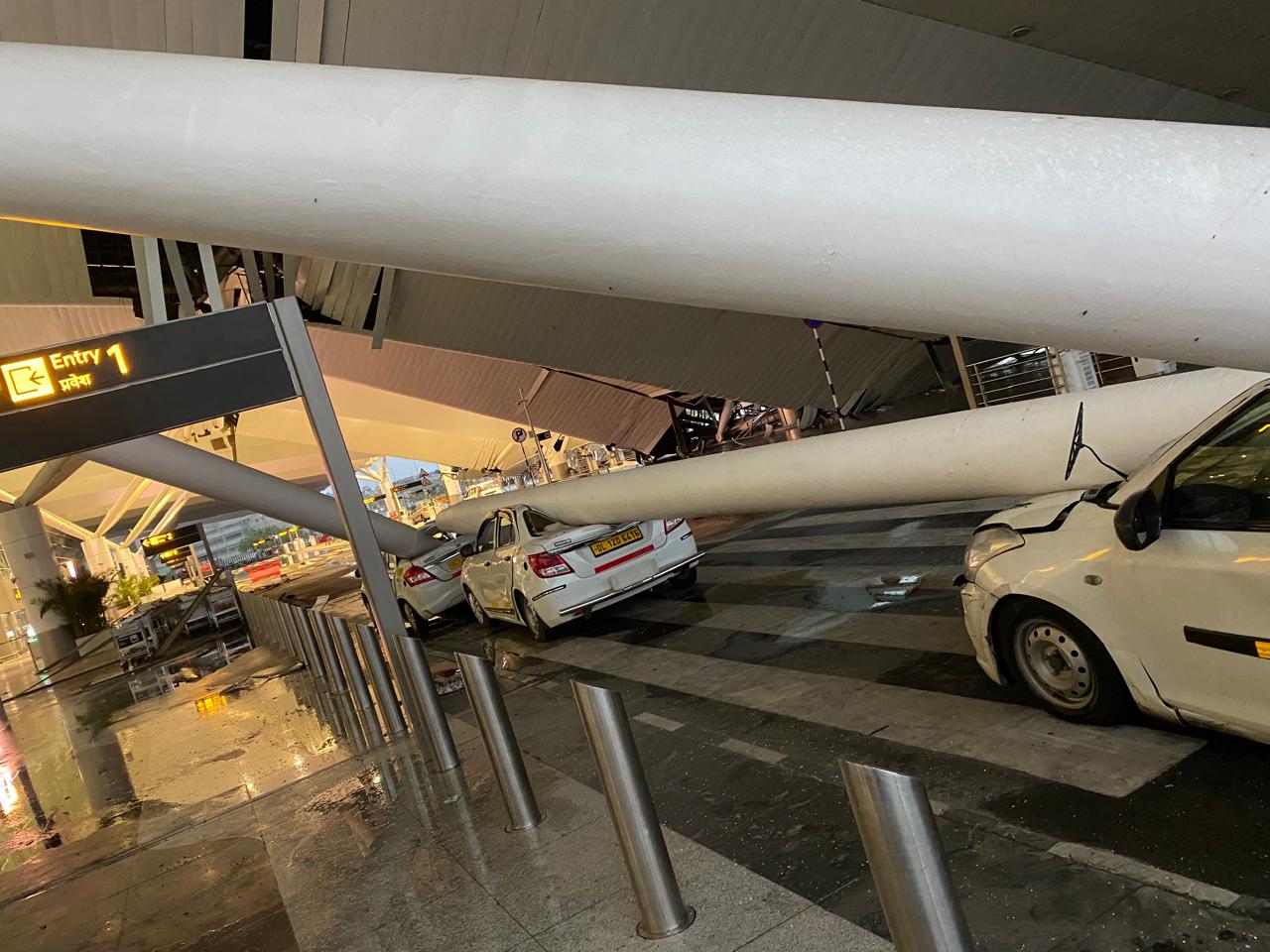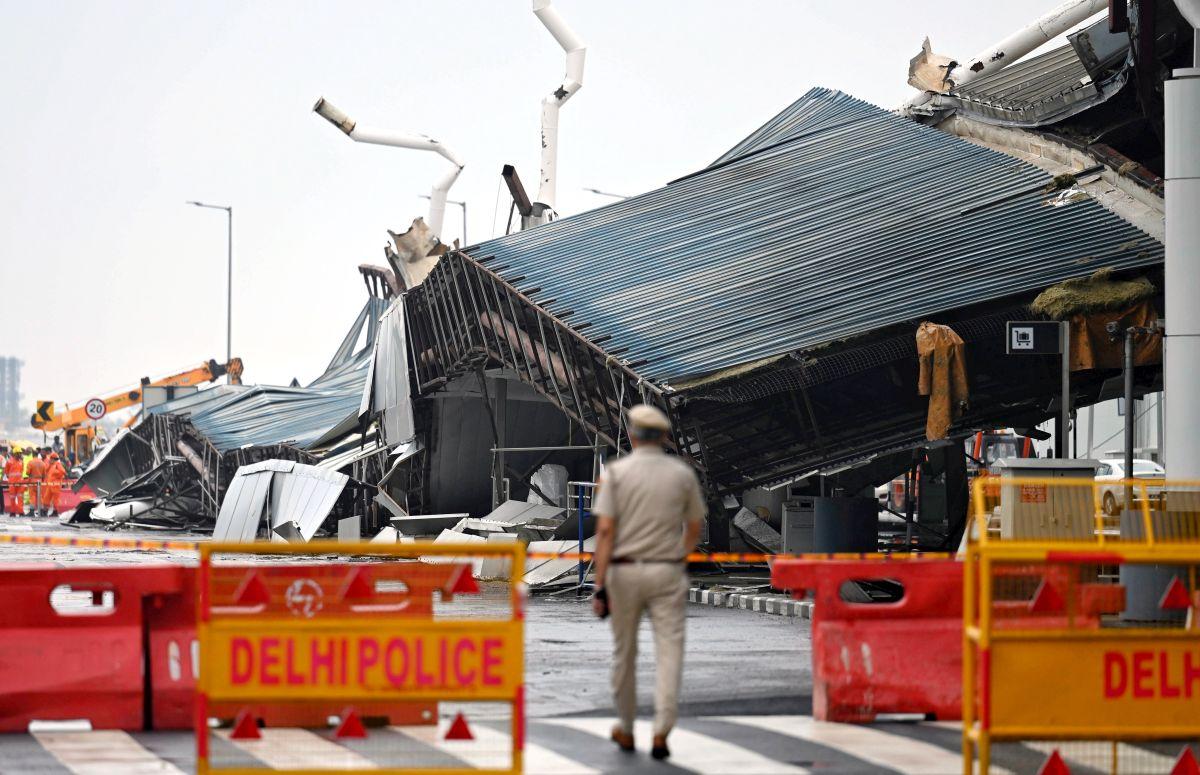delhi airport roof collapses is a shocking event that caught everyone off guard, raising serious questions about safety measures at one of the busiest airports in India. Early reports suggest that the incident occurred during a routine day, sending shockwaves through the terminal as passengers and staff scrambled to safety. Understanding the timeline leading up to the collapse and identifying those responsible for managing the aftermath is crucial in assessing what went wrong.
The circumstances surrounding this collapse highlight critical gaps in safety regulations and the need for stringent inspections and maintenance procedures. With numerous stakeholders involved, this incident not only disrupts airport operations but also places a spotlight on the broader implications for infrastructure safety in India.
Incident Overview
The recent roof collapse at Delhi Airport has raised significant concerns regarding safety and infrastructure integrity at one of the busiest airports in India. This incident not only disrupted operations but also highlighted the critical need for rigorous maintenance and safety protocols in high-traffic public spaces.
On the day of the incident, reports indicated that a portion of the terminal roof gave way during the early morning hours, leading to immediate chaos as passengers and staff evacuated the area. Emergency services responded quickly, and authorities worked to secure the site while assessing potential damage and injuries.
Timeline of Events
Understanding the sequence of events leading to the roof collapse provides insight into how such incidents can unfold. The following timeline Artikels key moments:
- Day Before Incident: Routine maintenance checks were conducted with no significant issues reported.
- Early Morning: Around 5 AM, passengers began to notice unusual sounds coming from the roof structure.
- 5:15 AM: The first reports of the roof collapse began to surface as a loud crash echoed through the terminal.
- 5:20 AM: Airport authorities initiated evacuation procedures, ensuring the safety of all personnel and travelers.
- 5:30 AM: Emergency services arrived on-site, swiftly assessing the situation and providing aid where necessary.
- 6:00 AM: Initial reports confirmed no serious injuries, but investigations into the structural failure began immediately.
Key Stakeholders in Incident Management
The effective management of the roof collapse incident involved several key stakeholders, each playing a vital role in the response and recovery processes. Their collaboration was essential in ensuring safety and transparency throughout the investigation.
- Airport Authority of India (AAI): Responsible for overall airport operations and safety compliance.
- National Disaster Response Force (NDRF): Engaged for emergency response and to assist in rescue operations.
- Fire Services: Played a crucial role in securing the area and managing any potential hazards.
- Engineering Consultants: Called to assess the structural integrity of the remaining terminal and investigate the cause of the collapse.
- Media Representatives: Provided timely updates to the public, ensuring accurate information flow regarding the incident and its impact.
“The safety of passengers and staff is our top priority, and we are working diligently to understand the failures that led to this incident.”
Safety Measures and Regulations: Delhi Airport Roof Collapses

In light of the recent incident at Delhi Airport, it’s crucial to assess the existing safety measures and regulations that govern airport infrastructure in India. These standards are in place to ensure the structural integrity of airports and the safety of passengers and staff alike. Understanding these regulations can help prevent future incidents and maintain public trust in air travel.
India has established several safety regulations that cover various aspects of airport infrastructure. The Directorate General of Civil Aviation (DGCA) plays a pivotal role in enforcing these regulations, which include guidelines for construction, maintenance, and inspection processes. These regulations are designed to ensure that all airport facilities, from runways to terminals, meet specific safety and quality standards.
Existing Safety Regulations for Airport Infrastructure in India
The safety regulations set by the DGCA encompass a wide range of requirements that airport authorities must adhere to. Some key elements include:
- Structural Design Standards: All airport buildings must comply with the National Building Code of India, ensuring appropriate engineering practices are followed.
- Fire Safety Regulations: Airports are required to implement comprehensive fire safety measures, including fire alarms, extinguishers, and staff training for emergency situations.
- Regular Inspections: Facilities must undergo routine safety inspections to identify and rectify any potential hazards.
- Environmental Compliance: Airports must meet environmental norms to minimize their ecological impact, including waste management and pollution control.
Safety inspections and maintenance procedures are essential to uphold these regulations. Routine inspections should be conducted to assess the condition of the infrastructure, focusing on critical structural elements such as roofs, walls, and support beams. A maintenance schedule that includes regular checks, repairs, and updates ensures that any wear and tear is addressed promptly, preventing minor issues from escalating into significant hazards.
Consequences of Non-compliance with Safety Standards
Non-compliance with safety regulations can lead to severe repercussions, both in terms of public safety and legal liability. Some of the potential consequences include:
- Legal Penalties: Airports failing to meet safety standards may face fines, legal action, or even the revocation of their operating licenses.
- Increased Risk of Accidents: Non-compliance can lead to structural failures, risking the safety of passengers and staff.
- Public Trust Erosion: Incidents resulting from negligence can damage the reputation of the airport and the aviation sector as a whole.
- Financial Losses: The costs associated with accidents, including medical expenses, lawsuits, and damage control, can be substantial.
“Ensuring compliance with safety standards is not just a regulatory requirement; it is a fundamental part of safeguarding lives.”
The importance of strict adherence to safety measures cannot be overstated, especially in a setting as critical as an airport. With the right inspections, maintenance, and regulations in place, incidents like the roof collapse at Delhi Airport can be prevented, fostering a safer environment for all.
Impact Assessment

The collapse of the roof at Delhi Airport has significant implications, affecting both immediate operations and long-term perceptions of safety. Analyzing these impacts is crucial to understand how this incident reverberates through the aviation system, the local economy, and public trust in the reliability of airport infrastructure.
Immediate Effects on Airport Operations and Passenger Safety
The immediate aftermath of the roof collapse resulted in a chaotic scene, disrupting airport operations and compromising passenger safety. Flights were grounded, and passengers faced delays and uncertainty as emergency services responded to the situation. These disruptions not only impacted travelers but also led to logistical challenges for airlines and airport personnel.
– The evacuation of passengers was prioritized, ensuring their safety amidst the unfolding crisis.
– Emergency protocols were activated, with law enforcement and medical teams on-site to manage the situation and assess injuries, if any.
– Operations at certain terminals were halted, causing a ripple effect on flight schedules and connections.
“Safety is paramount in aviation; any compromise can lead to a loss of public confidence.”
Economic Repercussions for the Airport and Surrounding Businesses
The economic implications of the roof collapse extend beyond immediate operational costs, impacting both the airport and local businesses that rely on airport traffic. The costs incurred from damages, repairs, and lost revenue during the closure can be substantial.
– The airport could face significant repair costs to restore its facilities, potentially running into millions of dollars.
– Airlines operating at Delhi Airport may experience financial strain due to canceled flights, impacting ticket sales and customer trust.
– Local businesses, particularly those relying on airport foot traffic—such as hotels, restaurants, and retail shops—may see a dramatic decrease in revenue as travelers avoid the area during recovery.
“The economic fallout from such incidents can take years to recover from.”
Long-Term Implications for Public Trust in Airport Safety, Delhi airport roof collapses
The long-term implications of the roof collapse on public trust in airport safety can be profound. Incidents like these can erode confidence among travelers and stakeholders in the aviation industry.
– Continuous media coverage may fuel public anxiety, leading to a loss of business as travelers seek alternative airports perceived as safer.
– Regulatory bodies may impose stricter safety measures and inspections, increasing operational costs for airports.
– The incident may prompt a broader discussion on infrastructure investments and maintenance, urging policymakers to prioritize safety over costs in future projects.
“Public trust is fragile; rebuilding it requires transparency and accountability.”
Response and Recovery

The roof collapse incident at Delhi Airport triggered a swift and structured emergency response aimed at ensuring the safety of all individuals involved and minimizing further risks. Various emergency protocols were activated to address the immediate aftermath of the collapse, focusing on both search and rescue operations and securing the area to prevent additional incidents.
Emergency Response Protocols
In the wake of the incident, multiple emergency response protocols were put into action. These included:
- Immediate Evacuation: Emergency personnel prioritized the evacuation of all personnel and travelers from the affected areas to ensure their safety.
- Search and Rescue Operations: First responders quickly mobilized teams trained to locate and assist any individuals potentially trapped under debris.
- Coordination with Local Authorities: The airport collaborated with police, fire departments, and medical teams to ensure a coordinated response, maximizing the effectiveness of resources.
- Establishment of a Command Center: A command center was set up on-site to manage communications and logistics among different emergency services.
Recovery Plans for Operations and Infrastructure
Once the immediate emergency was under control, the focus shifted towards recovery and restoration of operations. The recovery plans Artikeld strategies for both short-term and long-term repairs:
- Damage Assessment: Engineers and safety inspectors conducted thorough assessments to determine the extent of the damage and Artikel necessary repairs.
- Temporary Operational Adjustments: The airport implemented temporary measures to reroute flights and manage passenger flow while repairs were underway.
- Long-term Reconstruction Plans: Detailed blueprints for rebuilding the affected areas were developed, emphasizing enhanced safety measures and compliance with updated regulations.
Community Involvement and Communication Strategies
The recovery phase was also characterized by significant community involvement and transparent communication strategies to keep the public informed.
- Community Engagement: The airport held meetings with local stakeholders and community leaders to discuss recovery efforts and gather input on future safety measures.
- Regular Updates: A dedicated communication team provided regular updates through press releases and social media channels, ensuring accurate information reached the public promptly.
- Feedback Mechanisms: Channels for feedback were established, allowing the community to voice concerns and suggestions regarding ongoing recovery efforts and safety enhancements.
If you’re looking for a budget-friendly stay, the Red Roof Inn is a great option. They offer comfortable accommodations and are conveniently located, making it easy to explore nearby attractions. Plus, when you’re planning a trip, don’t forget about the importance of quality roofing to ensure your stay is as cozy as possible. A solid roof can make all the difference in your travel experience!
If you’re looking for a comfy stay, the red roof inn is a great budget-friendly option. They offer a cozy atmosphere with all the essentials, making it perfect for travelers. Plus, while you’re there, you might notice the importance of good roofing in keeping your stay safe and dry. It’s always good to appreciate the structures that make our experiences comfortable!
When it comes to home improvement, investing in quality roofing can really pay off in the long run. A solid roof protects your home from the elements and enhances its curb appeal. Speaking of great stays, check out the red roof inn if you’re ever in need of a place to crash. They offer great amenities and a welcoming vibe!